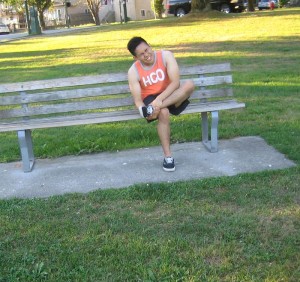Cuboid syndrome occurs if the ligament and joint near the cuboid bone in the foot is torn or damaged. It is also called as subluxation where the bones in a joint is moved slightly out of position.
What are the signs?
The main sign of cuboid syndrome is foot pain, usually on the lateral side where the small toe is. The discomfort might be aggravated if weight is placed on that side of the foot or if pushing on the arch on the base of the foot.
The discomfort linked with the syndrome can radiate to other parts of the foot when standing on the front of the toes.
Other accompanying signs include the following:
- Reddening close to the site of injury
The main sign of cuboid syndrome is foot pain, usually on the lateral side where the small toe is. - Diminished mobility, tenderness or weakness in the ankle or on the lateral side of the foot
- Swelling close the dislocated ligaments or ankle due to the buildup of fluid
The individual might also have an antalgic gait which occurs when changing the manner of walking to lessen the pain. This can manifest as limping or swaying from side to side.
What are the causes?
An ankle sprain or other forms of injuries are the usual cause. It can also stem from overuse or if the foot is subjected to repeated strain. The syndrome is likely to develop among those who play sports or activities involving a lot of running, jumping or moving side to side.
Additionally, excessive foot pronation or flat feet is also a cause.
Management of cuboid syndrome
The RICE method is the initial option to manage the pain:
- Resting the affected foot
- Ice the foot at 20 minutes at each session
- Compress using an elastic bandage
- Raise the foot higher than the level of the heart to reduce the swelling
In some cases, manipulation treatment is also used to manage cuboid syndrome. Another option is cuboid taping.
FACT CHECK
https://en.wikipedia.org/wiki/Cuboid_syndrome


